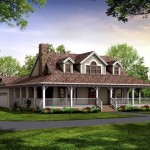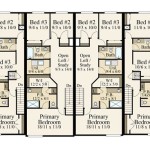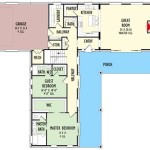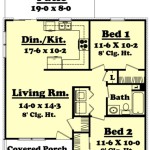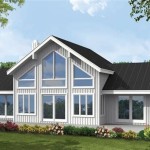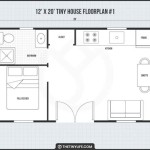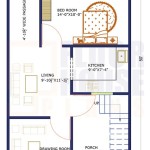Handicap House Plans: Designing for Accessibility and Inclusivity
Designing a home that is accessible and comfortable for individuals with disabilities requires careful consideration of various factors. Handicap house plans go beyond mere compliance with accessibility codes; they emphasize creating a living space that promotes independence, safety, and overall quality of life. These plans incorporate specific design elements and features intended to accommodate a range of mobility, sensory, and cognitive impairments.
The importance of handicap house plans is increasingly recognized as society strives for greater inclusivity. As the population ages, the need for adaptable housing solutions becomes more pronounced. Moreover, individuals with disabilities often face challenges in finding housing that meets their specific needs, highlighting the critical role of accessible design in ensuring equal access to housing opportunities. Handicap house plans address these challenges by integrating accessibility features seamlessly into the design, rather than as an afterthought.
This article delves into the key considerations and design elements that characterize handicap house plans. It will explore various aspects of accessibility, including mobility, sensory, and cognitive considerations, providing detailed insights into incorporating these elements into the overall design. The goal is to provide a comprehensive overview of handicap house plans, empowering individuals and design professionals to create homes that are truly accessible and inclusive.
Understanding the Principles of Universal Design
The foundation of handicap house plans lies in the principles of universal design. Universal design aims to create products and environments that are usable by all people, to the greatest extent possible, without the need for adaptation or specialized design. This approach fosters inclusivity and ensures that individuals with disabilities can navigate and utilize the home with ease and independence.
There are seven core principles that guide universal design:
- Equitable Use: The design is useful and marketable to people with diverse abilities. This means avoiding features that exclude or stigmatize any particular group. For example, a ramp leading to the front door should be aesthetically pleasing and integrated into the overall design, rather than appearing as an afterthought.
- Flexibility in Use: The design accommodates a wide range of individual preferences and abilities. This can be achieved through adjustable features, such as adjustable countertops or showerheads, that can be tailored to meet the needs of different users.
- Simple and Intuitive Use: Use of the design is easy to understand, regardless of the user's experience, knowledge, language skills, or current concentration level. Clear and consistent signage, along with intuitive controls, are essential for promoting ease of use.
- Perceptible Information: The design communicates necessary information effectively to the user, regardless of ambient conditions or the user's sensory abilities. This includes providing both visual and tactile cues, as well as ensuring that auditory information is clear and understandable.
- Tolerance for Error: The design minimizes hazards and the adverse consequences of accidental or unintended actions. This can be achieved through features such as grab bars in bathrooms, rounded corners on furniture, and slip-resistant flooring.
- Low Physical Effort: The design can be used efficiently and comfortably and with a minimum of fatigue. This involves minimizing the need for repetitive movements, sustained physical effort, and awkward postures. Examples include lever-style door handles and touchless faucets.
- Size and Space for Approach and Use: Appropriate size and space is provided for approach, reach, manipulation, and use regardless of user's body size, posture, or mobility. This often translates to wider doorways and hallways, ample turning space in bathrooms and kitchens, and adjustable shelving in closets.
By adhering to these principles, handicap house plans can create homes that are not only accessible but also aesthetically pleasing and functional for all occupants.
Key Elements of Accessible Design in Handicap House Plans
Implementing universal design principles requires careful consideration of specific design elements throughout the home. These elements address a range of accessibility needs, including mobility, sensory, and cognitive considerations.
Mobility Considerations:
Mobility limitations are among the most common accessibility challenges. Handicap house plans address these challenges through a variety of design features:
- Ramps and Accessible Entryways: Ramps provide a gradual transition between different levels, eliminating the need for stairs. Ramps should have a gentle slope, typically no more than 1:12 (one inch of rise for every twelve inches of run). Entryways should have adequate space for maneuvering wheelchairs or walkers.
- Wider Doorways and Hallways Doorways should be at least 32 inches wide to accommodate wheelchairs. Hallways should be at least 36 inches wide to allow for comfortable passage.
- Accessible Bathrooms: Bathrooms are often a significant challenge for individuals with mobility limitations. Accessible bathrooms should include features such as grab bars near the toilet and shower, a roll-in shower with a seat, and a height-adjustable sink.
- Accessible Kitchens: Kitchens should be designed with adjustable countertops, pull-out shelves, and appliances that are easily accessible. The sink should have knee space underneath to allow for seated use.
- Elevators and Lifts: In multi-story homes, elevators or lifts provide essential access between floors. Elevators should be large enough to accommodate wheelchairs and have easy-to-use controls.
- Slip-Resistant Flooring: Throughout the home, slip-resistant flooring is crucial for preventing falls. This includes materials such as textured tiles, rubber flooring, and low-pile carpets.
Sensory Considerations:
Sensory impairments can also pose significant challenges in the home environment. Handicap house plans incorporate features that address these challenges:
- Adequate Lighting: Proper lighting is essential for individuals with visual impairments. This includes providing ample natural light, as well as artificial lighting that minimizes glare and shadows. Task lighting should be provided in areas such as the kitchen and bathroom.
- Acoustic Design: Acoustic design can help to reduce noise and reverberation, creating a more comfortable environment for individuals with auditory sensitivities. This can be achieved through the use of sound-absorbing materials, such as carpets, curtains, and acoustic panels.
- Tactile Signage: Tactile signage, such as Braille or raised lettering, can provide important information for individuals with visual impairments. This signage should be placed in strategic locations, such as near doorways and elevators.
- Visual Contrast: High visual contrast between surfaces can help individuals with low vision to distinguish between different objects and spaces. This includes using contrasting colors for walls, floors, and furniture.
Cognitive Considerations:
Cognitive impairments can affect an individual's ability to navigate and use the home environment. Handicap house plans incorporate features that address these challenges:
- Clear and Simple Layout: A clear and simple layout can help individuals with cognitive impairments to navigate the home more easily. This includes avoiding unnecessary clutter and providing clear pathways between different rooms.
- Consistent Signage: Consistent signage can help individuals to orient themselves and find their way around the home. This includes using clear and concise labels for rooms, appliances, and storage areas.
- Memory Aids: Memory aids, such as calendars, clocks, and reminder systems, can help individuals to stay organized and remember important tasks. These aids should be placed in visible locations and be easy to use.
- Safety Features: Safety features, such as automatic shut-off valves for stoves and water heaters, can help to prevent accidents and ensure the safety of individuals with cognitive impairments.
By incorporating these key elements, handicap house plans can create homes that are truly accessible and inclusive, meeting the diverse needs of all occupants.
Examples of Accessible Design in Practice: With Photos
Understanding the principles and key elements of handicap house plans is crucial, but seeing them implemented in real-world examples can further illuminate their practical application.
Accessible Kitchen:
Imagine a kitchen designed with adjustable-height countertops. The area beneath the sink is open, allowing a person using a wheelchair to easily roll up and perform tasks such as washing dishes. Pull-out shelves in the cabinets bring stored items within easy reach. The oven is a side-opening model, minimizing the need to lift heavy items. Controls are front-mounted and easy to operate. Ample lighting illuminates the workspace, and contrasting colors make utensils and cookware easily visible against the countertop.
Accessible Bathroom:
An accessible bathroom features a roll-in shower with a built-in seat and adjustable showerhead. Grab bars are strategically placed near the toilet and shower for added stability. The sink is wall-mounted with knee space underneath, and the faucet is lever-operated or touchless for ease of use. The mirror is angled to provide a clear view for individuals of varying heights. Non-slip flooring ensures safety, and adequate space is provided for maneuvering a wheelchair or walker.
Accessible Bedroom:
The bedroom includes wide doorways for easy access. The bed is at a comfortable height for transferring from a wheelchair. A clear turning radius is provided around the bed. Closets feature adjustable shelving and pull-down rods to maximize accessibility. Lighting is adjustable, allowing for personalized comfort levels. Remote controls for lights and other appliances can be easily accessed from the bed.
These examples illustrate how handicap house plans can be implemented to create homes that are not only accessible but also beautiful and functional. By carefully considering the needs of all occupants, designers can create living spaces that promote independence, safety, and well-being.
These considerations and integrations are not exhaustive, but they provide a general overview of accessible design principles relevant to handicap house plans. Every individual has unique needs, and it's ultimately important to consider these needs when designing an accessible home.

Accessible Handicap House Plans Style Results Page 1

Wheelchair Accessible Small House Plans Drummond

Wheelchair Accessible Floor Plan House Plans

Exclusive Wheelchair Accessible Cottage House Plan 871006nst Architectural Designs Plans

Plan 8423jh Handicapped Accessible Split Bedroom Southern House Plans Floor

Wheelchair Accessible House Plan 2 Bedrms Baths 1687 Sq Ft 147 1009

Plan 1658 Handicapped Accessible House

Plan 062h 0012 The House

Attractive Traditional House Plan With Handicapped Accessible Features 86279hh Architectural Designs Plans

Goodman Handicap Accessible Home Plan 015d 0008 Search House Plans And More

